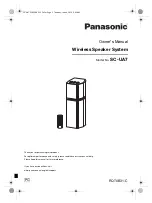
2
INSTALLATION
Mounting the Panel
Select a dry location close to an unswitched AC source and close to the telephone line connection. Remove
the control panel, the mounting hardware and the keypad from the cardboard retainer inside the cabinet.
Before attaching the cabinet to the wall, press the five circuit board mounting studs into the cabinet from the
back. Once the cabinet is mounted to the wall, pull all the cables into the cabinet and prepare them for
connection. Use a meter to test the wiring for opens, shorts and grounds. Press the circuit board onto the
mounting studs.
Complete all wiring to the control panel before applying AC power or connecting the
battery.
Mounting the Keypad
Keypads should be located close to the designated “Entry-Exit” doors and mounted at a height convenient for all
users.
Auxiliary Power Connection
The auxiliary power supply can be used to power keypads, motion detectors and other devices that require 12
VDC. Refer to the Hook-up Diagram for Fire Zone wiring instructions. The total load for the auxiliary power output
must be calculated for all devices connected across the AUX+/- terminals and for devices connected between
the AUX+ and PGM terminals; allow 35 mA for each PC2550RK keypad connected to the panel. The output
current cannot exceed 575 mA.
Bell/Siren Connection
Observe polarity when connecting siren drivers, sirens and polarized bells.
PGM Terminal Connections
The PGM terminal is a switched negative output which can be controlled by various programming options; refer to
Programming Section [06]. Devices controlled by the PGM output must be connected between the negative PGM
terminal and the AUX+ terminal.
Keypad Wiring
Up to five keypads may be connected in parallel. Do not connect multiple keypads on the same wire run. For
stand-by loading purposes, assume a current draw of 35 mA per keypad. This estimate represents the panel in
the disarmed state with two open zones.
AC Power Wiring
Complete all wiring to the control panel before connecting AC power or the battery. Do not plug the transformer
into an outlet that is controlled by a switch.
Battery Connection
Observe polarity when connecting the battery; if the battery connection is made in reverse, the battery fuse will
open. The battery charging voltage is factory set and normally needs no adjustment.
If AC power is OFF and the battery voltage is approximately 9.5 V or lower, the battery will be disconnected and
the panel will power down. To power up again, the AC will have to be re-established. This feature is designed to
prevent damage to the battery due to prolonged discharging.
Telephone Line Wiring
For proper operation, there must be no other telephone equipment connected between the control panel
and the telephone company’s facilities.
Do not use this equipment on a telephone line equipped with “call holding” features as the tones generated
by these features may interfere with communicator operation.
Do not connect the alarm panel communicator to telephone lines intended for use with facsimile (FAX) machines.
These lines may incorporate a voice filter which disconnects the line if other than FAX signals are detected,
resulting in incomplete transmissions.
Ground Connection: EGND Terminal
The PC2525 has been designed to function properly whether the control panel is connected to ground or not. If
the control panel is to be grounded, the connection to earth ground must be made to a copper cold water pipe or
to a properly installed ground rod not less than 6' (2.83 m) in length. Note that a poor ground connection may
actually interfere with the system’s operation and may cause damage to the control panel.







































